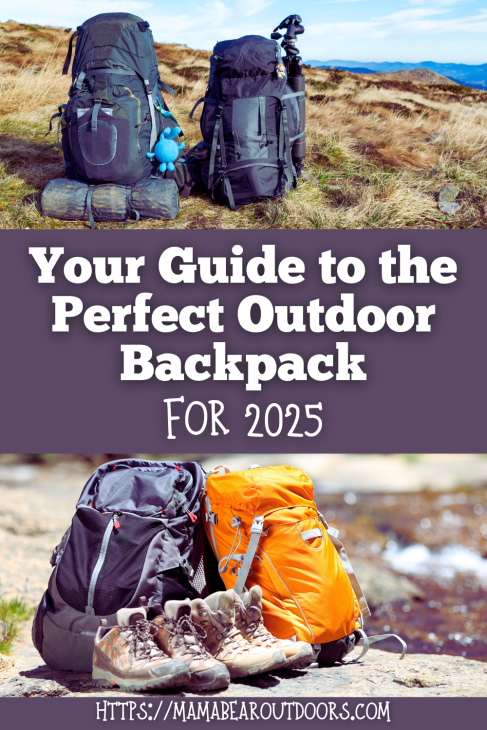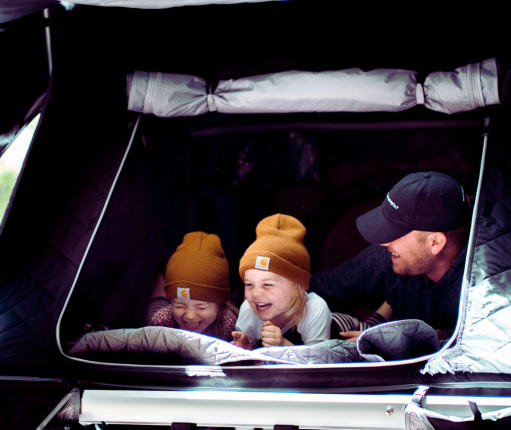Backpacks are the unsung heroes of outdoor adventures. Whether you’re heading into the wilderness for a week, fishing at a nearby river, hiking a mountain trail, or even bringing your pet along for the fun, the right backpack is key to a smooth, safe, and enjoyable experience. But not all backpacks are created equal—each is tailored to a specific activity and set of needs.
In this guide, we’ll break down 8 types of backpacks used in the great outdoors—what makes each unique, who they’re for, and why you might need one in your gear lineup. Backpacks are really one of the outdoor essentials for any outdoor adventure.
Your Guide to the Perfect Outdoor Backpack
Choosing the right backpack is crucial for a safe and enjoyable outdoor adventure. The correct fit and design help distribute weight properly, reducing strain on your back and shoulders while keeping you comfortable on the trail. Each backpack is built with specific features for different activities—like fishing rod holders, hydration sleeves, or pet compartments—ensuring you have the right tools and storage for your journey.
Beyond comfort, the right backpack helps you stay organized, prepared, and efficient in the wild. It allows you to pack what you need—whether for a short hike or a multi-day trek—so you can explore farther, stay out longer, and handle unexpected challenges with confidence. In the outdoors, your backpack isn’t just gear—it’s your mobile basecamp.
1. Backpacking Backpack – Built for the Long Haul
A backpacking backpack is the heavy-duty workhorse of the outdoor gear world. Designed for multi-day or even multi-week treks, these packs typically range from 50 to 80 liters in capacity. They’re built to carry a lot of gear comfortably—tent, sleeping bag, food, water, cooking tools, clothes, and more.
These packs feature internal frames for stability, adjustable shoulder straps and hip belts for weight distribution, and plenty of compartments to keep things organized. Newer models often include hydration bladder compatibility and ventilation systems to keep you cool.
- Best for: Long-distance hikes, backcountry camping, thru-hiking (like the Appalachian or Pacific Crest Trail)
2. Day Pack – Light and Ready for Action
A day pack is the minimalist’s best friend. Designed for short outings, these smaller packs (typically 15 to 30 liters) are perfect for carrying essentials like water, snacks, sunscreen, a light jacket, and a first-aid kit.
Day packs usually have a single main compartment and maybe a few pockets for smaller items. They’re lightweight, compact, and easy to throw on for impromptu hikes, urban nature walks, or day trips to the park.
Best for: Short hikes, local trails, everyday outdoor use
3. Hiking Backpack – Balanced for Day-to-Day Exploration
Not quite as small as a day pack and not as large as a full backpacking bag, a hiking backpack strikes a balance. These packs usually range from 30 to 50 liters, making them ideal for full-day hikes or overnight trips with minimal gear.
Look for ergonomic shoulder straps, moisture-wicking back panels, and hydration system compatibility. Many hiking packs offer built-in rain covers and external loops for trekking poles.
Best for: Long day hikes, overnight stays, mountain summits
4. Fishing Backpack – Keep Tackle Handy and Hands Free
Fishing backpacks are tailored for anglers who want to stay mobile without sacrificing gear access. These specialized packs include tackle trays, waterproof compartments, rod holders, and often even built-in coolers or fold-out stools.
Some fishing backpacks are waterproof or made from rugged, weather-resistant material to withstand riverbanks, boat decks, or drizzly weather.
Best for: Shore fishing, fly fishing, backcountry angling trips
5. Hunting Backpack – Quiet, Durable, and Built for the Field
A hunting backpack is designed to meet the specific demands of hunters. These packs come with camouflage patterns, quiet fabric, and multiple compartments for organizing gear, ammo, optics, knives, and sometimes even meat-hauling frames.
Many hunting backpacks feature hydration bladder sleeves, rifle or bow holders, and compression straps to secure heavy or bulky loads. Some even convert into tree stand seats or come with blaze orange covers for safety.
Best for: Deer, elk, turkey, and big-game hunters, especially on public land or in remote areas
6. Dog Backpack (Gear Pack) – Let Your Pup Pull Their Weight
For active dogs, a dog backpack—also called a dog gear pack—allows your furry friend to carry some of their own supplies, such as collapsible bowls, waste bags, treats, and water. These backpacks are padded and adjustable, with straps that sit comfortably across your dog’s back and chest.
Just be sure to start small and build your dog’s endurance. A good rule of thumb is not to load a dog pack with more than 10–15% of your dog’s body weight.
Best for: Hiking dogs, trail dogs, and backpacking pups
7. Dog Backpack Carrier – For Small or Elderly Companions
Not all dogs are trail-ready, but that doesn’t mean they can’t come along! A dog backpack carrier is worn by you and is perfect for small breeds, elderly dogs, or dogs recovering from injury.
These carriers feature mesh ventilation, padded interiors, secure closures, and adjustable straps for your comfort. Some are front-facing for dogs who like to see the trail, while others sit on your back like a traditional pack.
Best for: Toy breeds, senior dogs, and hiking trips with elevation gain
8. Cat Backpack – For the Adventure Cat in Your Life
Yes, cats can enjoy the great outdoors, too! A cat backpack is a secure, ventilated carrier with mesh windows or a bubble dome, allowing your feline to observe nature while staying safe and contained.
Most cat backpacks have built-in harness clips and reinforced panels for structure. They’re great for short hikes, park visits, or even road trips where your cat needs a secure travel solution.
Best for: Curious cats who enjoy leashed outings or sightseeing from the safety of a pack
Choosing the Right Backpack for Your Outdoor Style
When selecting a backpack, ask yourself these key questions:
- What is the main activity I’ll be using this backpack for?
- How long will I be outside?
- Do I need weather protection, hydration storage, or pet accommodations?
- How much weight can I comfortably carry?
Having the right backpack makes any outdoor experience more enjoyable. It helps you stay organized, prepared, and comfortable—whether you’re deep in the backcountry or just exploring your local trail.
Final Thoughts
Backpacks are more than just gear carriers—they’re part of your outdoor identity. Whether you’re hiking solo, heading out to hunt, taking your cat for a stroll, or hitting the lake with your tackle box, there’s a backpack that fits your needs (and your back).
Invest in the right pack, and every adventure will be a little easier—and a lot more fun. Let us know in the comments if you have any tips for choosing a backpack.




















No Comments